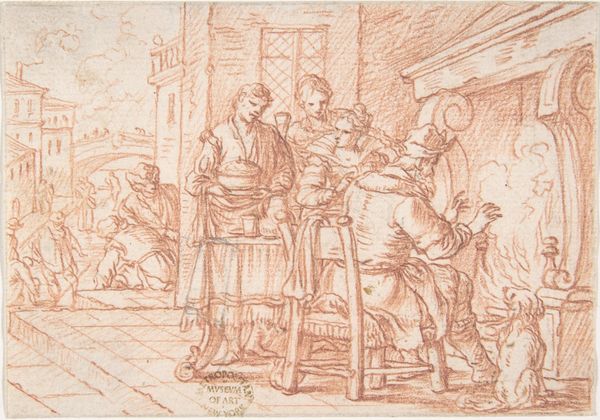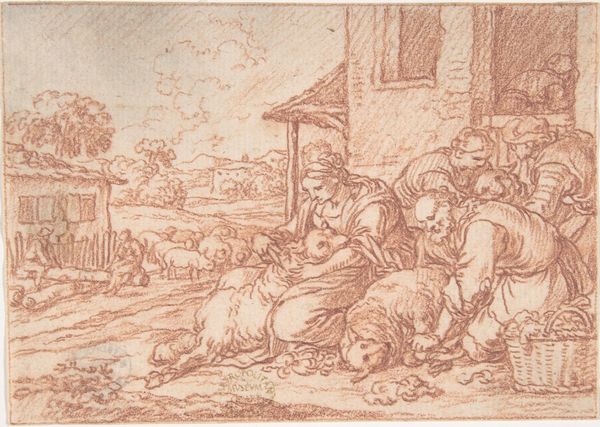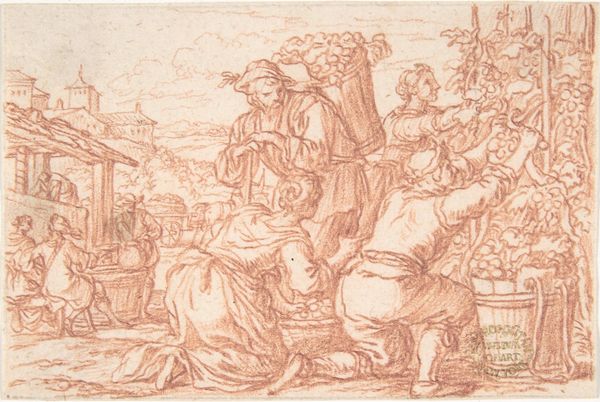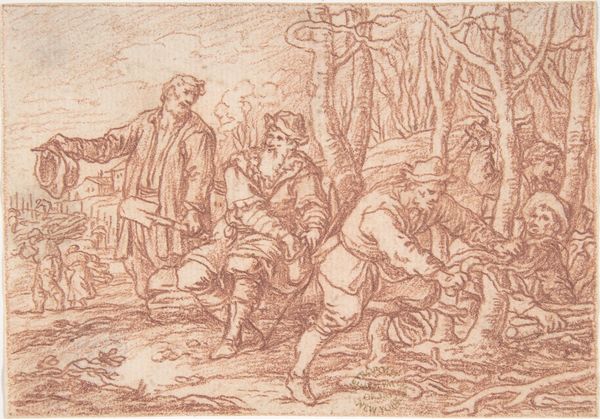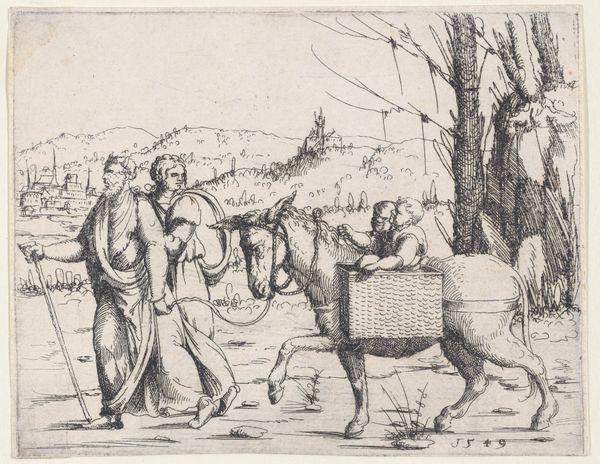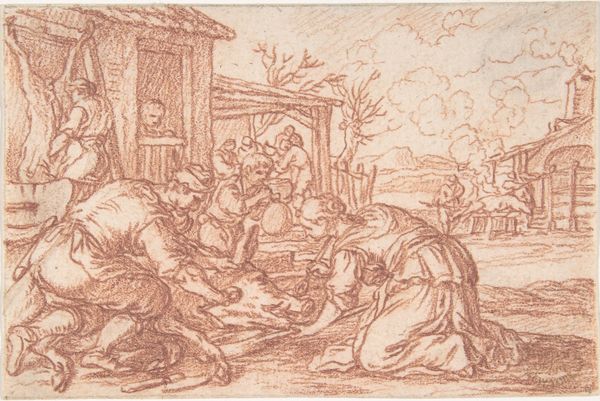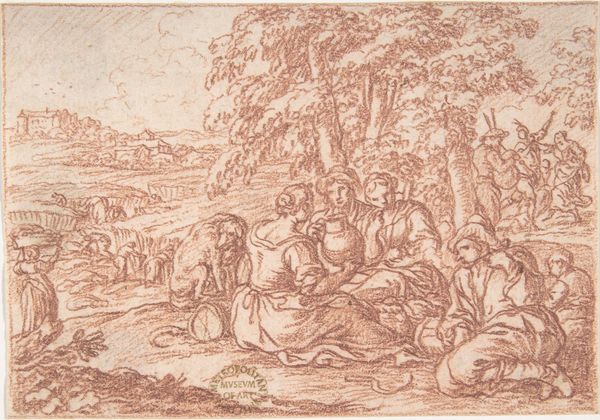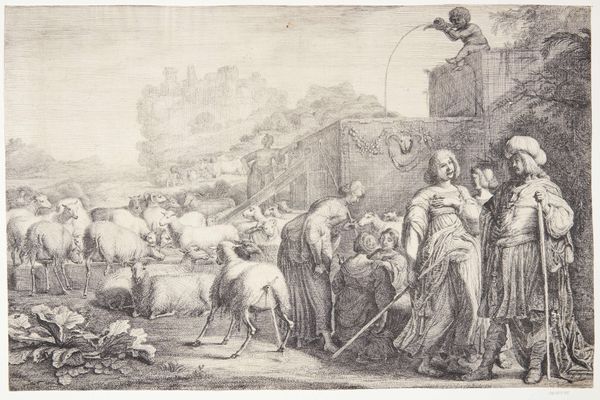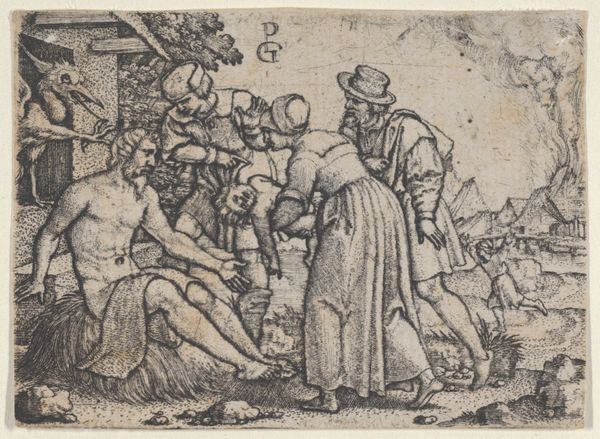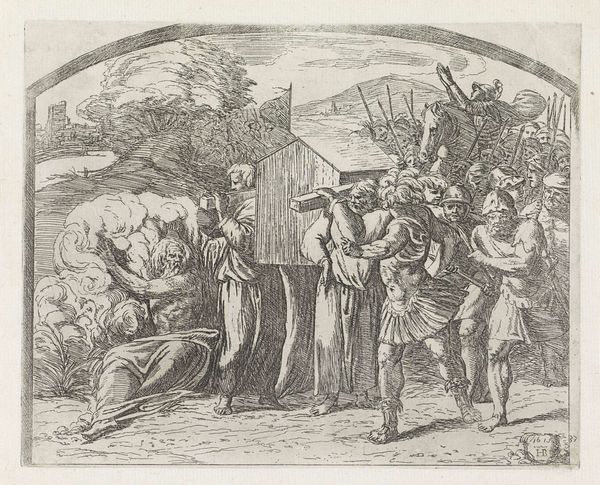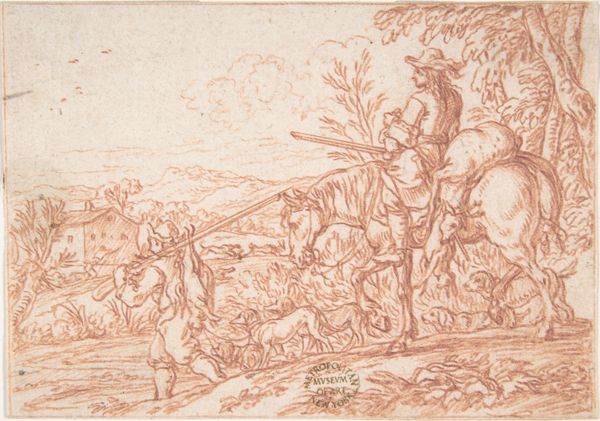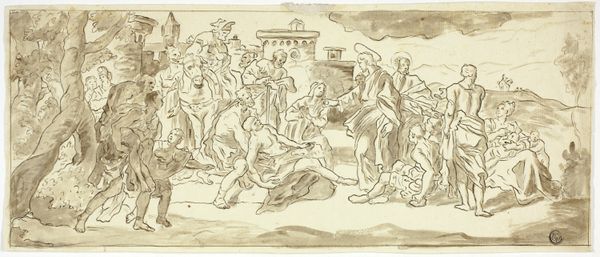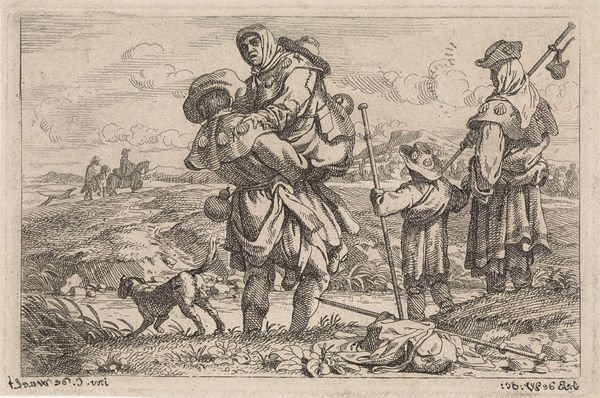
July (one of a series representing the labors of the months) 1690
0:00
0:00
drawing, red-chalk, dry-media
#
drawing
#
narrative-art
#
baroque
#
red-chalk
#
landscape
#
perspective
#
figuration
#
dry-media
#
genre-painting
Dimensions: 3 1/4 x 4 3/4 in. (8.3 x 12.1 cm)
Copyright: Public Domain
Curator: What a peaceful scene. This red chalk drawing, created around 1690 by Jonas Umbach, is entitled "July", and is part of a series representing the labors of the months. Editor: There’s a certain wistful quality to it, a sort of rosy-colored melancholia, even. It's not just the drawing's monochrome red-chalk, but how the loose strokes and shading suggest an idealized countryside existence—though that probably wasn’t everyone's reality. Curator: Indeed, the materials and the process are crucial here. Umbach utilized red chalk, a readily available and relatively inexpensive medium, which speaks volumes about its accessibility and the democratization of art production at the time. Consider the socio-economic implications. Editor: Absolutely, and let's not forget who gets to create art. Was Umbach capturing peasant life from a position of privilege? There’s a bustling activity, but is this labor being romanticized? It seems pertinent to understand whose viewpoint this represents, to really consider the agency of the figures. Curator: I think what we are witnessing is Umbach using readily accessible drawing to capture what many would see as the labor and production of agriculture from his immediate setting. Editor: It is a reminder that idyllic pastoral landscapes often conceal complex socio-economic dynamics and unequal power structures, and that’s what makes pieces like this so vital; it pushes us to explore historical inequities around labor and land ownership. The rendering may be beautiful, but the scene it depicts asks for critical viewing. Curator: Precisely. Focusing on the process, material, and production, it’s possible to connect Umbach’s world with issues still relevant today around work, the value of production and accessible, even cheap, methods for capturing the reality that he faced. Editor: Looking closely and with these aspects in mind reminds us to be attentive about the conditions under which creative expression is created and under which labors the populous are required to partake, especially in representations of the mundane or every day.
Comments
No comments
Be the first to comment and join the conversation on the ultimate creative platform.
